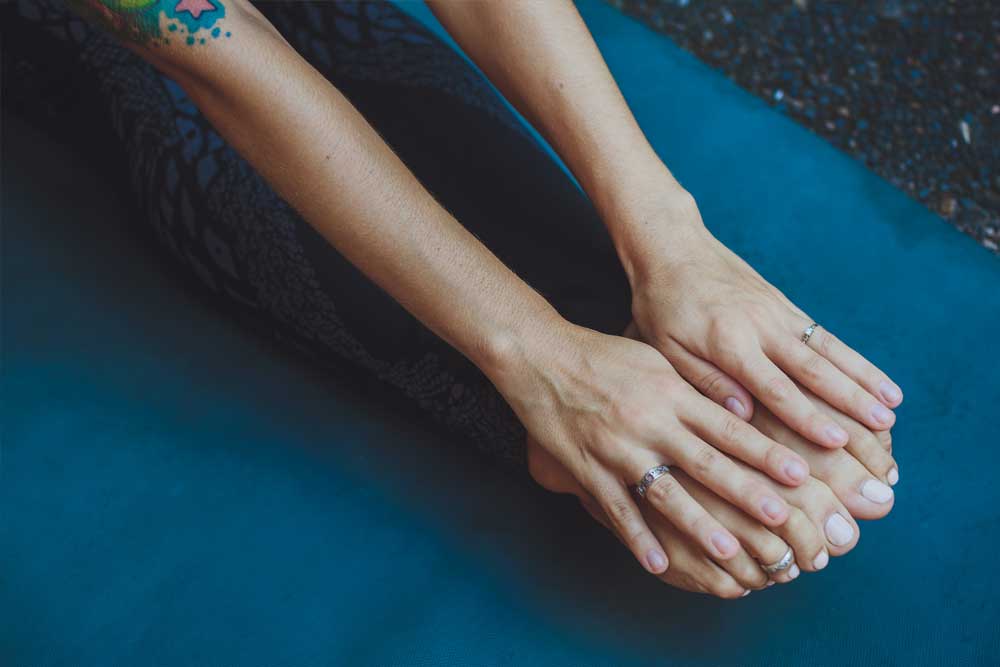At menopause, it is not uncommon to experience unusual sensations. These can include tingling, pins and needles and the feeling of something crawling all over you. The medical term for this is paraesthesia and there is considerable overlap between these conditions, with many women suffering from both. Menopause restless legs syndrome is common at this time of life. Read on to find out more about what causes these conditions, as well as treatment options and when to see the doctor.
Find what you need quickly
- What do we mean by menopause restless legs syndrome ?
- What does it feel like?
- How likely is restless legs syndrome during menopause?
- How can you minimalise restless legs syndrome?
- Would hormone replacement therapy (HRT) help
- Restless legs and menopause
- Learn more – the latest restless legs and menopause research
What do we mean by menopause restless legs syndrome?
Restless legs syndrome is a common condition that causes the sufferer to feel an overwhelming urge to move their legs. This often happens alongside paraesthesia, a broad medical term for any disturbance in sensation (feeling).
As menopause restless legs syndrome is often worse at night, it can lead to sleep problems. It can also be associated with jerking movements in the arms and legs. These symptoms range from mild to severe, and some women find them distressing and disruptive. It is therefore important that you speak to your doctor if you are struggling.
What does it feel like?
At menopause, abnormal sensations tend to affect the feet, legs, hands and arms. They can take many different forms, such as these below.
Menopause tingling all over the body
This feeling can start in one place or multiple places and travel. It’s hard to pinpoint and sleeping can be a challenge.
Menopause pins and needles
An uncomfortable feeling in your hands and feet that can strike at any time, often at night. It can be hard to get your feeling back.
Creeping feelings
It can feel like ants, flies or whatever critter takes your imagination is on your skin. Super annoying when you are trying to sleep. Read more about skin changes.
Numbness
Waking up with a numb hand or foot can really make getting going in the morning or going to the loo at night a simple task.
Pain
Locked knees, joint pain or aching muscles waking you up during the night? It could be down to hormonal changes in menopause. Read more about aching muscles.
As restless legs syndrome and paraesthesia can both be caused by other medical conditions, your doctor may also prescribe medication to help with your symptoms.
How likely is restless legs syndrome during menopause?
- These symptoms are fairly common
- One study of 5,000 menopausal women found that 18.1% of 45-54 year old women suffered from restless legs syndrome
- This increased to 20.9% in the 55-64 age group
Read more about the stages of menopause.
How can you minimalise restless legs syndrome?
- Avoid stimulants including caffeine, alcohol and tobacco
- Take regular exercise
- Maintain good sleep habits (including sleeping at set times, having a relaxing bedtime routine and avoiding daytime naps)
- Take a hot bath before bed
- Massage the affected parts of your body
- Take gentle, relaxing forms of exercise like yoga, tai chi, walking or stretching
As restless legs syndrome and paraesthesia can both be caused by other medical conditions, your doctor may also prescribe medication to help with your symptoms.
Would hormone replacement therapy (HRT) help
One small study found that symptoms of restless leg syndrome were more severe in women taking HRT.
However, the relationship between restless legs syndrome, paraesthesia and other symptoms of menopause (which could be improved by HRT) is complex.
For example, we know that restless legs syndrome can be worse if you are struggling with sleep – and HRT can help to improve the quality of your sleep at menopause.
For this reason, it is important to speak to your doctor about your own personal treatment options if you would like to consider HRT. Read more about the HRT debate.
Restless legs and menopause
What causes restless legs?
For many sufferers, restless legs syndrome has no known cause.
However, we do know that it can have a genetic component and that reduced levels of a chemical known as dopamine in the brain can play a role.
While we know that restless legs syndrome and paraesthesia become more common at menopause, experts are still unsure as to how exactly declining hormone levels contribute.
One theory is that fluctuating oestrogen levels can affect levels of dopamine and another chemical called glutamate, although more research needs to be done.
Restless legs syndrome can also be due to an underlying health condition.
Common examples include iron-deficiency anaemia, chronic kidney disease, diabetes and an underactive thyroid.
Similarly, paraesthesia can have many possible causes.
Certain medications and types of chemotherapy, low vitamin or iron levels, trapped nerves, diabetes and multiple sclerosis are a few examples.
As there are so many possible causes for these types of symptoms, it is important to see your doctor to ensure that you receive the correct tests and treatment.
When should you see a doctor?
In a minority of cases, paraesthesia can be associated with serious conditions including stroke.
Seek urgent medical attention by calling 999 if you have a sudden onset of paraesthesia with:
- Loss of power (strength) in any part of the body
- Slurred speech
- Loss of vision or any other sensory changes
- Drowsiness
- Any other serious medical concerns
Otherwise, it is a good idea to see your doctor if your symptoms or paraesthesia or restless legs syndrome are constant, or if they keep coming back.
I can remind myself that the moment will pass”
Learn more – the latest restless legs and menopause research
- NHS 2018, Restless legs syndrome
- NHS 2021, Pins and needles
- Wesstrom J, Nilsson S, Sundstrom-Poromaa I, Ulfberg J. Restless legs syndrome among women: prevalence, co-morbidity and possible relationship to menopause. Climacteric. 2008 Oct;11(5):422-8.
- Sieminski M, Karwacka M, Nyka W, Restless Legs Syndrome and Hormonal Replacement Therapy in Women at Menopausal Age, Neurology, Apr 2012, 78
- NHS, 2019, Hormone Replacement Therapy
- Knott L, 2018, Pins and needles, Patient





